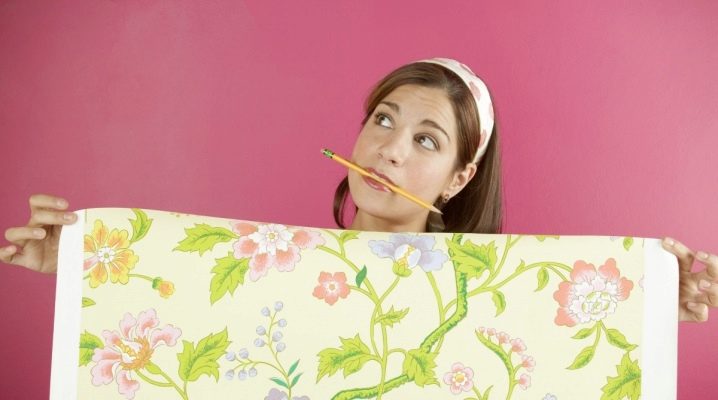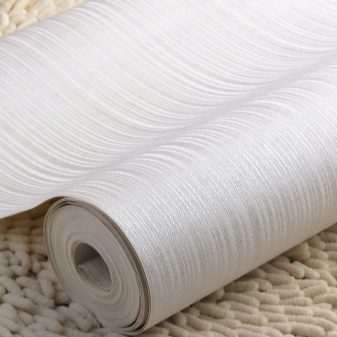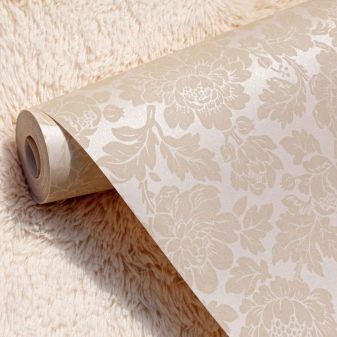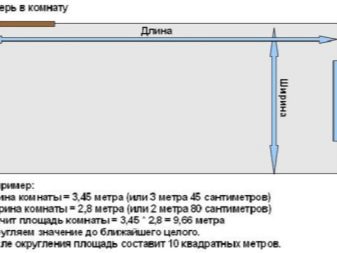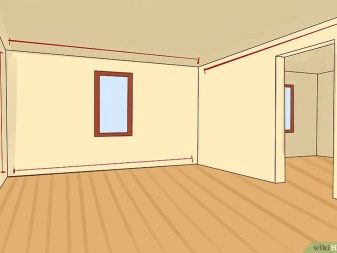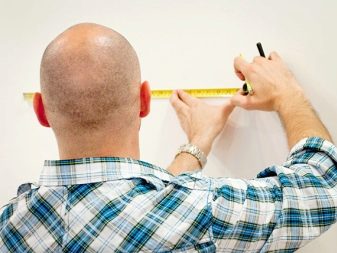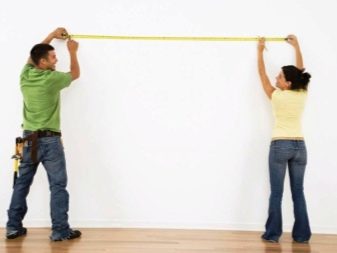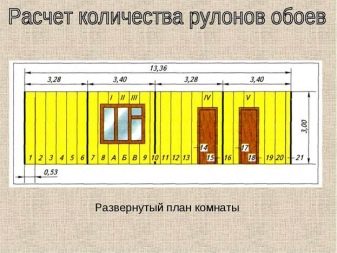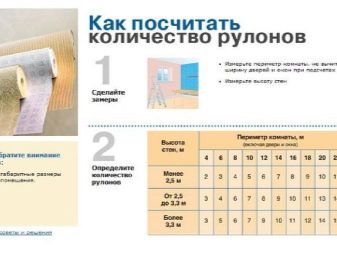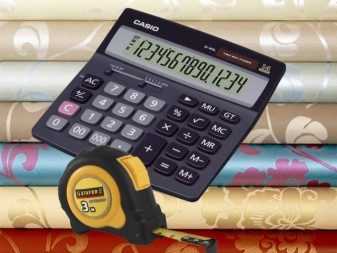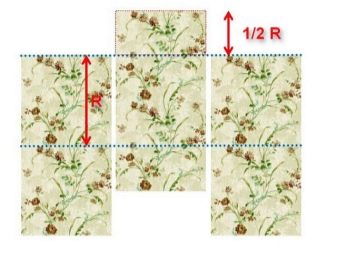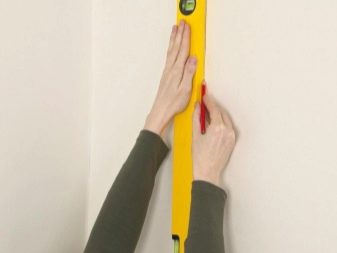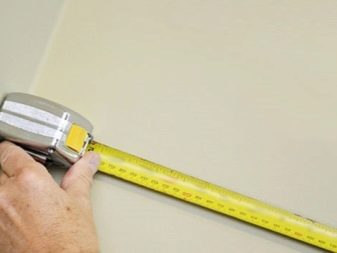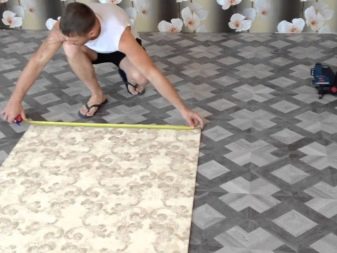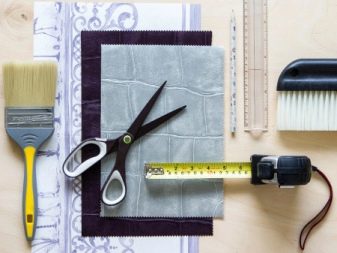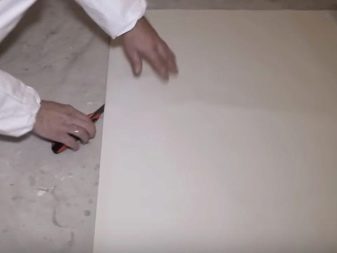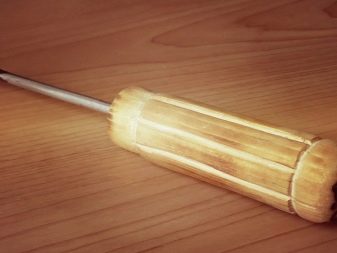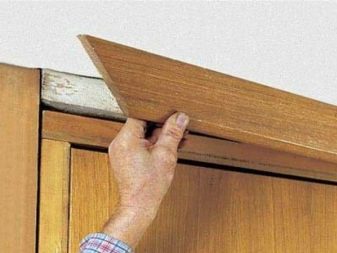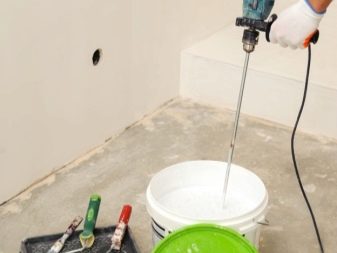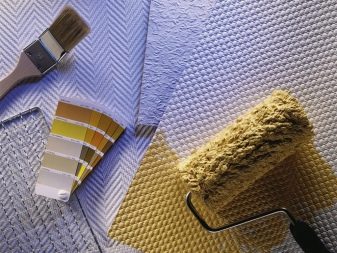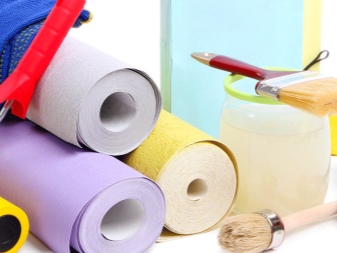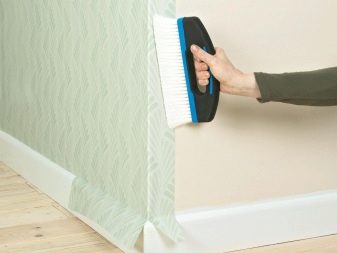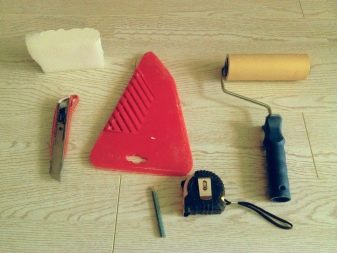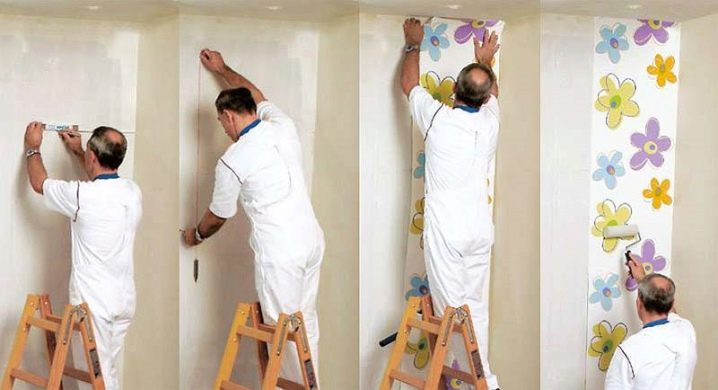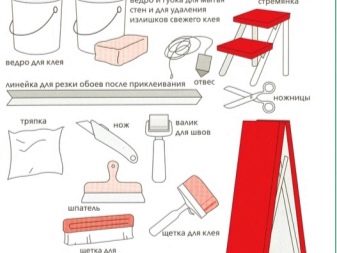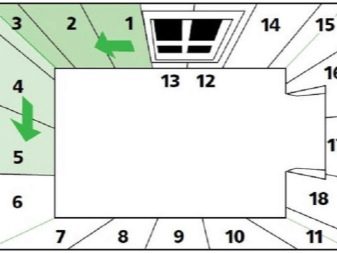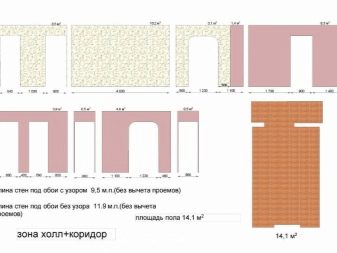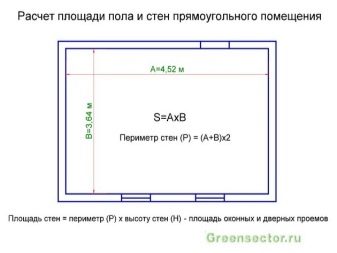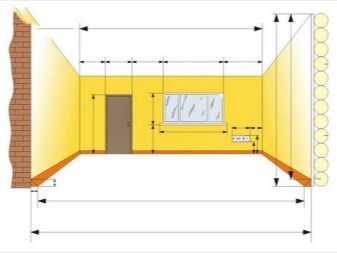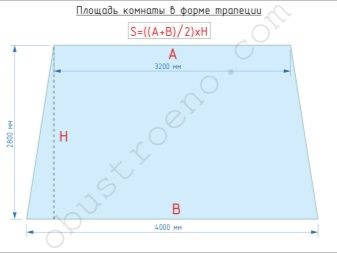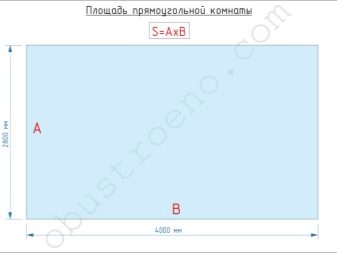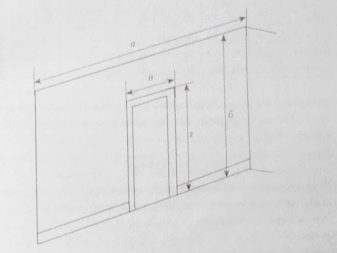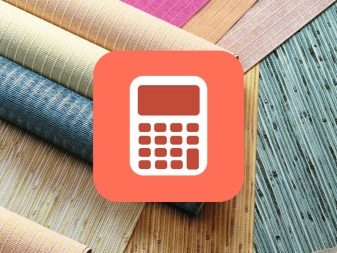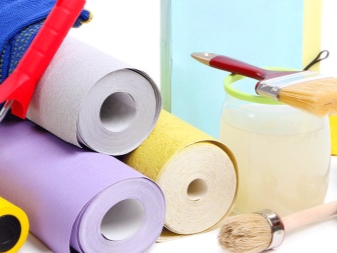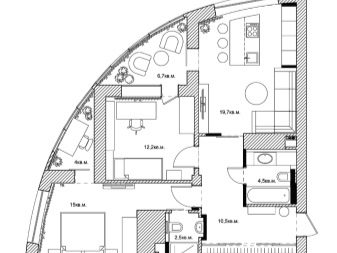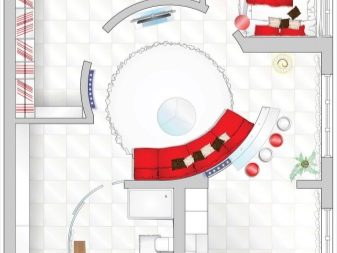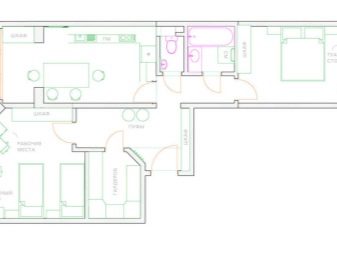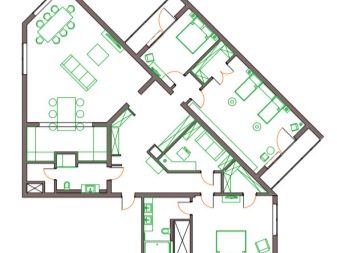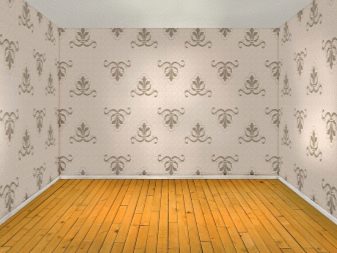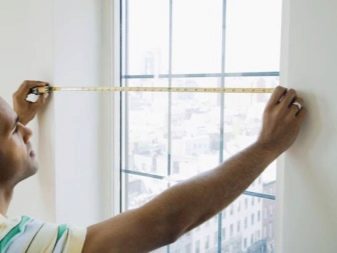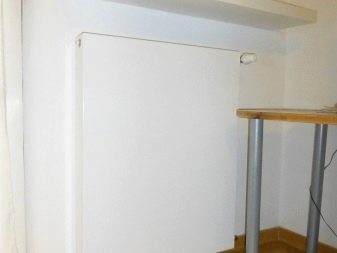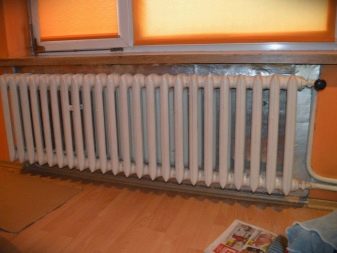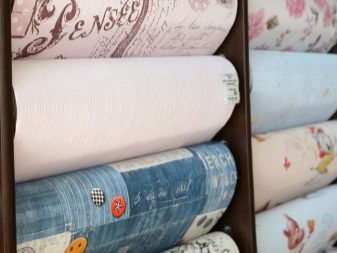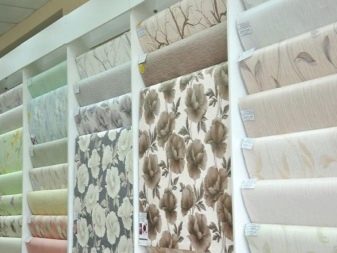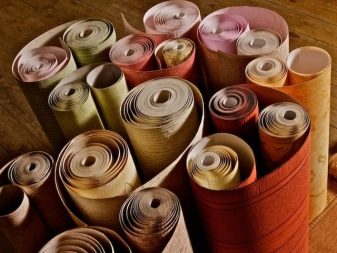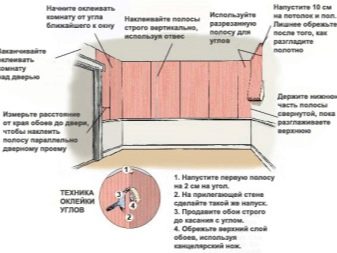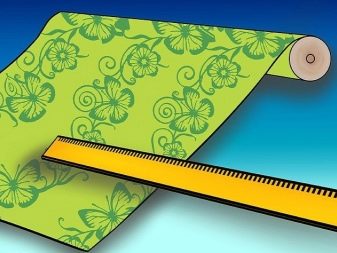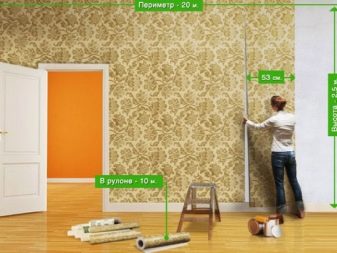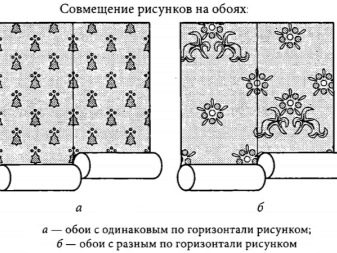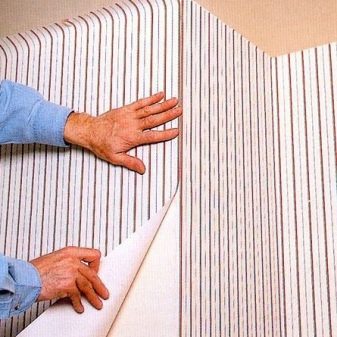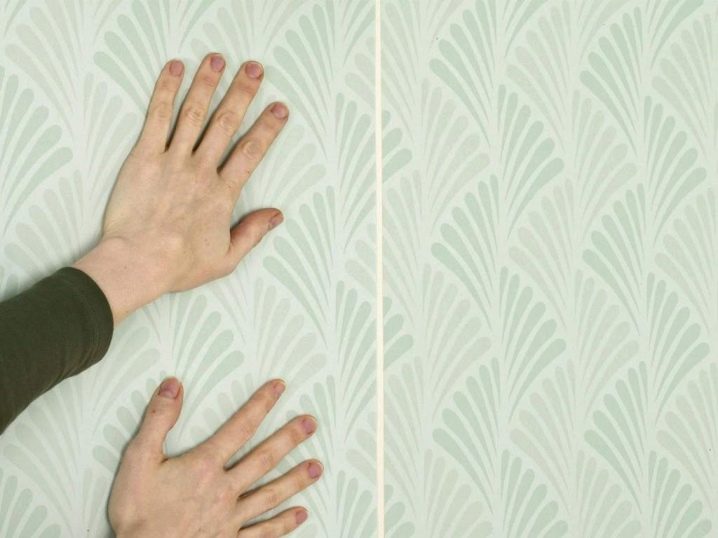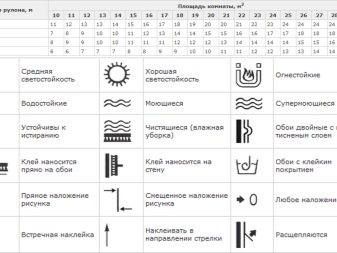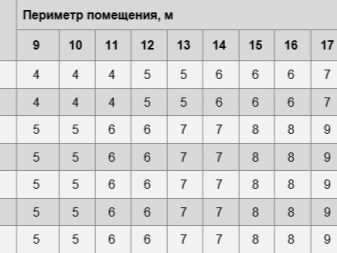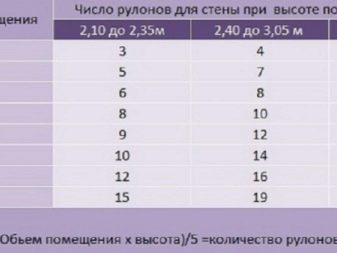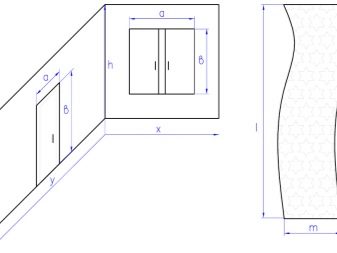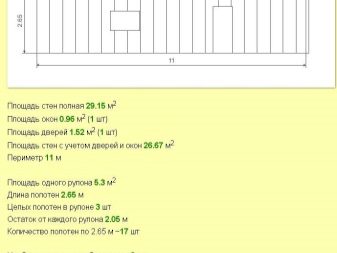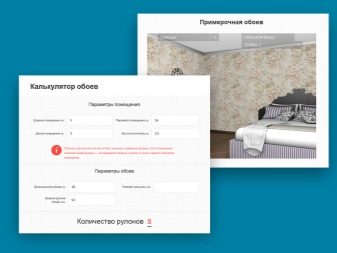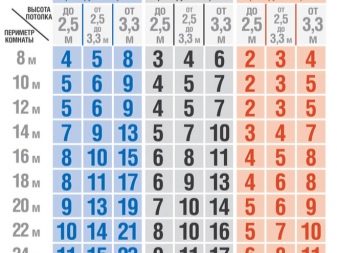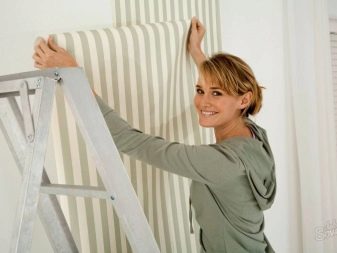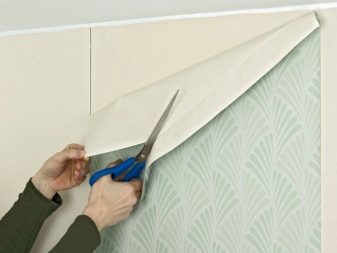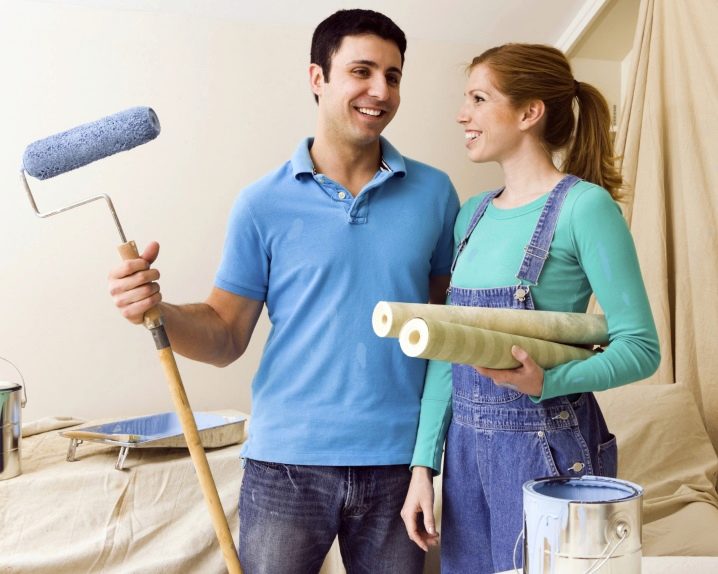How to calculate the amount of wallpaper per room?
The process of wallpapering is not as simple as it seems at first glance. In order to qualitatively and beautifully glue the room with rolled wallpaper, it is necessary to make the correct measurements. On their basis, it is already easier to make accurate calculations of the required amount of wallpaper.
Required quantities
In order for the gluing process to go smoothly and without “extra nerves”, as was said earlier, everything must be measured and calculated in advance. Otherwise, there may be a “surprise” in the form of a bare spot on the wall with a missing piece of wallpaper, or, conversely, too many rolls will remain.
First of all, the calculations will require such quantities as the length and height of each of the further glued wall.
For example, you can take the usual room of standard sizes, for example, it has the following footage: the height of the walls is 2.5 m, the width of the room is 3 m, the length is 5 m.
The first thing to do is, armed with a conventional tape measure, find out the length of each of the walls. Then we add the known values on paper: (3 + 5) x2 = 16 m is the perimeter of the room to be measured.
Next, you need to measure the width of the wallpaper (usually, these parameters are written on each roll, the standard width of 0.5 m). The resulting number of the perimeter of the room is divided by the width of the wallpaper, that is, 16 m: 0.5 m = 32. This number indicates how many strips of wallpaper will be needed for the room.
The next value that will be needed in the calculation is how many lanes will be obtained from each roll in order to find out their number in the future. A standard roll has a metric of 10, 25, or 50 meters, but if a non-standard was acquired, where the fractional values are, then for ease of calculation we round it down to an even number. This length is divided by the known height of the room wall. It turns out 10 m: 2.5 m = 4 - so many bands come from one roll of wallpaper.
It remains the case for small - to know the exact number of rolls. To do this, divide the number of required lanes for the entire space by the number of lanes in one roll. 32: 4 = 8 - so many rolls will be needed for full pasting of the selected room.
Masters, in turn, are advised to purchase more on one roll of wallpaper anymore, as there is always a chance to make a mistake or accidentally spoil several lanes, and not to run after the next convolution of the desired wallpaper web it is better to always have a little in reserve. It will also always be possible to replace the spoiled fragment with children or pets.
Preparation of tools
A very important process before directly pasting the walls with wallpaper is a thorough preparation, since during this process a certain amount of auxiliary tools and improvised means will be required.
The very first thing you can't do without is a regular pencil, they will need to mark the pending length on the wallpaper canvas. It can be both special construction and ordinary.
Of course, you can not do without a long line or construction roulette. They will be used to measure the parameters of the room (length, height, width), as well as to make a wallpaper roll. It will be difficult and long to make measurements of the indoor space with a ruler, so for this purpose it is better to use a tape measure, and with its help,in turn, it is difficult to draw straight lines on a sheet of wallpaper. In this regard, it is better to take both.
To cut the canvas into separate sheets, a stationery knife or sharp scissors is useful, but the master advises the first option, since it is easy to make cuts or slots for sockets and wiring with it. It is also easy for them to make shots when it is necessary to release air bubbles, but here it is more sensible to use a needle, this is how it will turn out more accurately and imperceptibly. In turn, the scissors will be useful for cutting out some “figured” parts where clarity and smoothness of lines is required.
Of course, you will need a screwdriver to remove the protective bulging box from the switches or any other mounts on the wall.
Since the walls and corners in the house are not always perfectly smooth, and the pattern on the wallpaper is present, the construction level is useful. With its help, it will be easy to glue the strip so that both the design and the corners do not “twist”.
You will need two containers, one for water, and the second will be mixed with glue. Water is needed to wipe accidentally dropped glue drops with a cloth; if you quickly wipe it off, there will be no trace.
If we talk about a rag, then it must be clean and soft (wet wallpaper is easy to crush and damage). It is very important that in the process of wiping off excess glue, it was wet, but not wet, otherwise the wallpaper may become soaked with moisture and just slide down the wall.
In order to mix the glue solution with high quality, you will need a construction mixer or an ordinary wooden stick, which will have to mix the ingredients for a long time and with high quality. Masters advise not to pour out the glue all at once, but in parts, so it will turn out to make it more uniform and without lumps.
In order to apply the glue evenly and quickly, it is best to use a roller or a wide brush with a pile of medium hardness. As for the roller, then his nap should be small.
A very convenient device for gluing is a painting bath. It has a cavity for the solutions and a ribbed surface with a bevel (so that the excess merges back). It is good to pour glue into it in small quantities, dip the roller in there, and remove the excess by scrolling it on the ribbed side. It is very important that its size matches the width of the roller, otherwise there will be no sense from the bath.
A wallpaper spatula will be a good helper in getting rid of the air that has come under the glued wallpaper. The main thing is that it should be either rubberized or plastic, otherwise the metal can crush or tear the still wet, not dried strip. It "expels" not only air bubbles, but also excess glue, which must be immediately wiped and cleaned.
For places such as joints between the bands, there is a special roller. It is made of rubber or silicone and has the shape of a small round barrel. It is very convenient for them to press joints without damaging or deforming the wallpaper. There is also a special roller for the angular contact of the surface with wallpaper, these are places near the ceiling, near the floor or in the corners of the room. Due to its flat shape, it is easy for them to push through all the corners so that the strip holds well.
Of course, do not forget about the tape. With its help, you need to glue all the "bare" wires, which will later serve to install sockets and so on.
Of course, the above mentioned list can be supplemented with all sorts of newfangled fixtures, but for high-quality gluing of the wallpaper we have enough of this.
Measurement of space
As mentioned earlier, without accurate measurement of all three basic parameters of a room, it will not be possible to calculate the exact number of rolls of wallpaper. Especially it concerns the case when you need to paste over not one room in an apartment or a house, but several.
To make it easier to visualize, you need to draw a general outline of the room. For this you need a pencil, a ruler and a simple sheet of paper. You will also need a tape measure, which will be used to measure the space.
Having schematically outlined on paper the walls and the arrangement of the windows, it is necessary to sign such quantities as the height of the walls, the width and the length of the room itself. Then specify the parameters of the window to subtract them from the total footage, as they do not need to paste over.
Next, find out the area of each wall and fold together to find out the total number. To do this, we multiply the height by the width. Assume that this space has a height of 2.5 m, width - 3 m, and length - 4 m.
We recognize the area of the first wall: 2.5x3 = 7.5 square meters. Then we multiply this number by 2, since there are two such walls - they are opposite. 7.5 square meters m x 2 = 15 square meters. m - in the amount of 2 walls. Do the same with the other two. (2.5 mx 4) x 2 = 20 square meters mWe add the obtained values - 10 +15 = 25 square meters. m - the area of the entire surface of the walls in the room.
Do not forget about the surface area of the window, which must be subtracted. First, it must be calculated in a known manner. Take the size of a conventional window - width 1.35 m, height 1.45 m. 1.35 x 1.45 = 1.96 sq. M. m. The result obtained is subtracted from the total surface area of the walls of the room - 25 -1.96 = 23.04 square meters. m - the area of the glued surface of the walls.
In any room there is an entrance door or passage, which is also not a surface, it does not need to be pasted over with wallpaper. In this regard, the surface area of the door and the entrance space itself must be subtracted from the total wall area obtained above. An ordinary door with a transom has a height of 2.5 meters and a width of 0.8 m. 2.5 x 0.8 = 2 square meters. m (door area with a gap from it to the ceiling).
Subtract the calculated area of the total - 23.04 - 2 = 21.04 square meters. m
From the result obtained using simple mathematical calculations, you can find out the number of rolls of wallpaper needed for a room, knowing the coverage area of one roll.
Here, length is also multiplied by the width, and then the total area of the room is divided by the area of one wallpaper roll.
Custom surfaces
There are some rooms that have a non-standard layout, but the calculation must still be carried out. To be exact at 100%, even in a room of standard dimensions and parameters, the walls are not always smooth and they need to be aligned beforehand, otherwise the ornament or pattern on the wallpaper will be hard to join over the entire surface of the walls.
For unusual surfaces can be attributed to the wall with rounding in the corners, or when the wall itself has the shape of a semicircle. There are rooms where the walls are rounded to the ceiling and have a dome top. Also, there are protrusions or partitions that divide the space into zones and so on.
To determine the number of rolls of wallpaper, the area will still have to be calculated in this case. Masters advise to "cut" the space into comfortable shapes (square, rectangle). To do this, take the width of the wall and its height at the highest point and mentally connected into a rectangle. In the corners will remain rounded triangles, which are also divided into squares. Later all sums of the areas add up, and the total area turns out.
But many “seasoned” upholsterers say that it is not necessary to calculate this thoroughly.
In the process of gluing, you just need to cut off the excess along the contour of the bend with a regular knife or clerical (with it you will get neater).
If the wall has the parameters of a regular rectangle, but a convex shape in the form of a Russian letter c, then its width is measured using a tape measure, which must be pressed tightly to the surface. Height will be normal, without any problems and any changes. And then the area is calculated according to the well-known formula.
In the case when there are convex parts or certain structures on the wall (for example, a pipe from the hood, which is closed with rectangular sheets of drywall or PVC), then its area must also be calculated and added to the total surface. It is good when it has a clear angular shape, like a square or a rectangle, but if there are rounded parts, it is also better to calculate them, like the “correct” figures, and then remove the small excess with a knife.
Roll sizes
After all the necessary parameters of the room have been calculated, then we should proceed to the calculation of the wallpaper. Before this, you need to know the width and length of the selected roll.
To date, there are several standards for the metric parameters of wallpaper, as manufacturers are both foreign and local, that is, Russian.
The width of the roll has many variations, but today there are three main sizes that most manufacturers try to adhere to:
- 53 cm - the most frequently used size, so it is found in foreign and local brands of wallpaper. Since it is very convenient for sticking, it is preferred more than others.
- 70 cm - second in frequency width. This size is more popular with European manufacturers. As everyone knows, people are trying to buy imported wallpapers, because, in turn, in some respects they are better, therefore the demand for such width is very high.
- 106 cm - as the masters say, the wider the wallpaper, the faster you can complete the process, but this is not always the case. With such a width, “massive” wallpaper rolls are most often made.
For the Russian market, meter and half meter wide wallpapers are preferred.
As for such a parameter as length, then everything is a little simpler.
In this case, there are also three main sizes:
- The most basic length is 10.5 meters. It adheres to most manufacturers of wallpaper. It is enough for 3 full strip on the wall.
- For wallpaper rolls with a width of 53 centimeters, a length of 15 meters is typical. As a rule, this wallpaper made of vinyl or non-woven.
- For heavy wallpaper with a meter width, made of fiberglass or the same non-woven, make footage of 25 meters.
In the wallpaper roll, there is such a thing as a coating area, which varies from its length.
When the standard length is made 1050 cm, and the width is 53 cm, then according to the formula (S = a * b), it turns out 53000 sq. M. cm (5.3 sq. m). With a similar width, and a length of 1500 cm, the area will be almost 80,000 square meters. cm (8 sq. m). If we take a length of 2500 cm, and a width of 106 cm, then it turns out - 25 square meters. m. - 25,000 square meters. cm.
Rapport and pattern settings
It may seem that sticking wallpaper is reduced only to ensure that only calculate the footage, the number of strips, and then the rolls. Basically, this is true, but only applies to wallpapers that do not have a pattern or a complex ornament. In this case, it will be necessary to adjust the wallpaper to make it look like a monolithic piece.
Before you choose a wallpaper with a pattern, you must determine what rapport is. Rapport refers to the repetition of a pattern or pattern on a wallpaper roll. In turn, it is divided into 2 types. It happens side (picture goes on the width of the sheet) and high (the ornament repeats in height).This arrangement directly depends on the parameters of the canvas and the size and type of the ornament itself.
When sticking such wallpaper there is one most important need - to align wallpaper strips according to the pattern, which affects the final result. The fact is that for such wallpapers there is a slightly different calculation of rolls.
To do everything right, you will need the conventions located on each wallpaper wallpaper:
- If a label is drawn on the label - an arrow with 0, then it means that this roll of wallpaper can be glued and joined to the stripes, without fear of disrupting the integrity of the ornament, there is not much difference.
- When the arrows pointing at each other are shown, the wallpaper strips need to be clearly joined along the edges. But, if the opposite pointing arrows are offset (one is higher than the other), then the glue needs to be shifted up or down (in this case, a special canvas will be calculated over the entire surface of the wall). As a rule, on the packaging of such rolled canvases are numbers. For example - 55/23, the first digit indicates (in centimeters) the size of the ornament or pattern, and the second indicates by how much (also in centimeters) one strip should be shifted relative to another.
- In the case when the arrows point at each other from the bottom up, this means that during the arrangement of the sheets of wallpaper sheets, there should be a counter docking.
Do not throw away the short stripes with a pattern.
They can be used for the space below the window, between the battery and the window sill, or for the gap of the wall above the door.
From the above, it is clear that the calculation of the material with rapport will be different. First of all, you need to find out the perimeter of the wall, then divide it by the width of the wallpaper and get the number of necessary bands. Then, you need to calculate how many offsets will need to be done in one lane, the larger the drawing, the more wallpaper will be needed. Knowing this information, we find the number of rolls.
Counting formula
To count the number of rolls is a very laborious task, especially when you do it the first time. For this case, the wizard advised to use a special table that will help to correctly calculate the consumption of wallpaper in the room.
Calculation tables can be found both in the store and on the Internet; all you need to do is write down the necessary parameters and get the finished result in the form of the number of wallpaper rolls. They can be oriented both on the perimeter and on the square.Along the perimeter, it is very easy to calculate, as described earlier. As for the area, here, first, you need to find out the area of the room itself.
For example, take the following parameters: length - 4 m, width 3 m. Accordingly, the area is 12 square meters. Then, you need to add a room with volume, namely, find out the height of the ceiling, since the result directly depends on it. Let's say the height is 2, 5 meters. Further, it is necessary to determine the width of the wallpaper roll and its length - these are also fundamental figures when calculating.
Next, you just need to substitute the variables in the data table: it turns out that with an area of 12 square meters. m, ceiling height of 2.5 meters, and if the roll has the parameters of 0, 53 mx10 m, then you need 8 rolls.
If the room is 15 square meters. m, and the height - 3 meters, then you need about 11 rolls.
|
Room height - 2.5 meters |
Height over 2.5 meters, up to 3 |
|
S (floor area) |
N (number of rolls) |
S (floor area) |
N (number of rolls) |
|
6 |
5 |
6 |
7 |
|
10 |
6 |
10 |
9 |
|
12 |
7 |
12 |
10 |
|
14 |
8 |
14 |
10 |
|
16 |
8 |
16 |
11 |
|
18 |
9 |
18 |
12 |
If the roll has other parameters, then, respectively, and need to look for a different table. But even so, it can be understood that the wider and longer the wallpaper roll, the less they will be needed.
But it is best to use the usual formula, which leads the calculation from the perimeter of the room.
What else needs to be considered?
Calculating the wallpaper on the room is not an easy thing, because you need to take into account many factors and nuances that can play a leading role.
First of all, it is necessary to take into account the spare roll of wallpaper, as there are situations when several bands were accidentally ruined during pasting, for example, they were strongly crushed, the front side was smeared with glue, and this was not corrected, crookedly pasted, and everything was removed from the wall and so on.
During the calculation of the perimeter or area, you need to measure all the irregularities of the wall, they, too, "take" on themselves a certain amount of wallpaper.
Many people wonder whether it is worth glueing the wallpaper behind the furniture. Masters advise two options. If this is a massive monolithic hardware that is attached to the wall and will not move or move, then in order to save money and time for repairs, you can not count on this space. But it should be understood that the wallpaper sheet should go a little behind the furniture so that there is a visual feeling that they are also glued there.
In the event that there is no certainty that the furniture will stand in its place for a long time, then, of course, you need to paste over all the walls.
Do not forget about such material as glue. It is better for them to stock up with a small margin, it is much better if it stays a little longer for future use than it is not enough in the middle of the process.
For how to calculate the number of wallpapers per room, see the next video.
